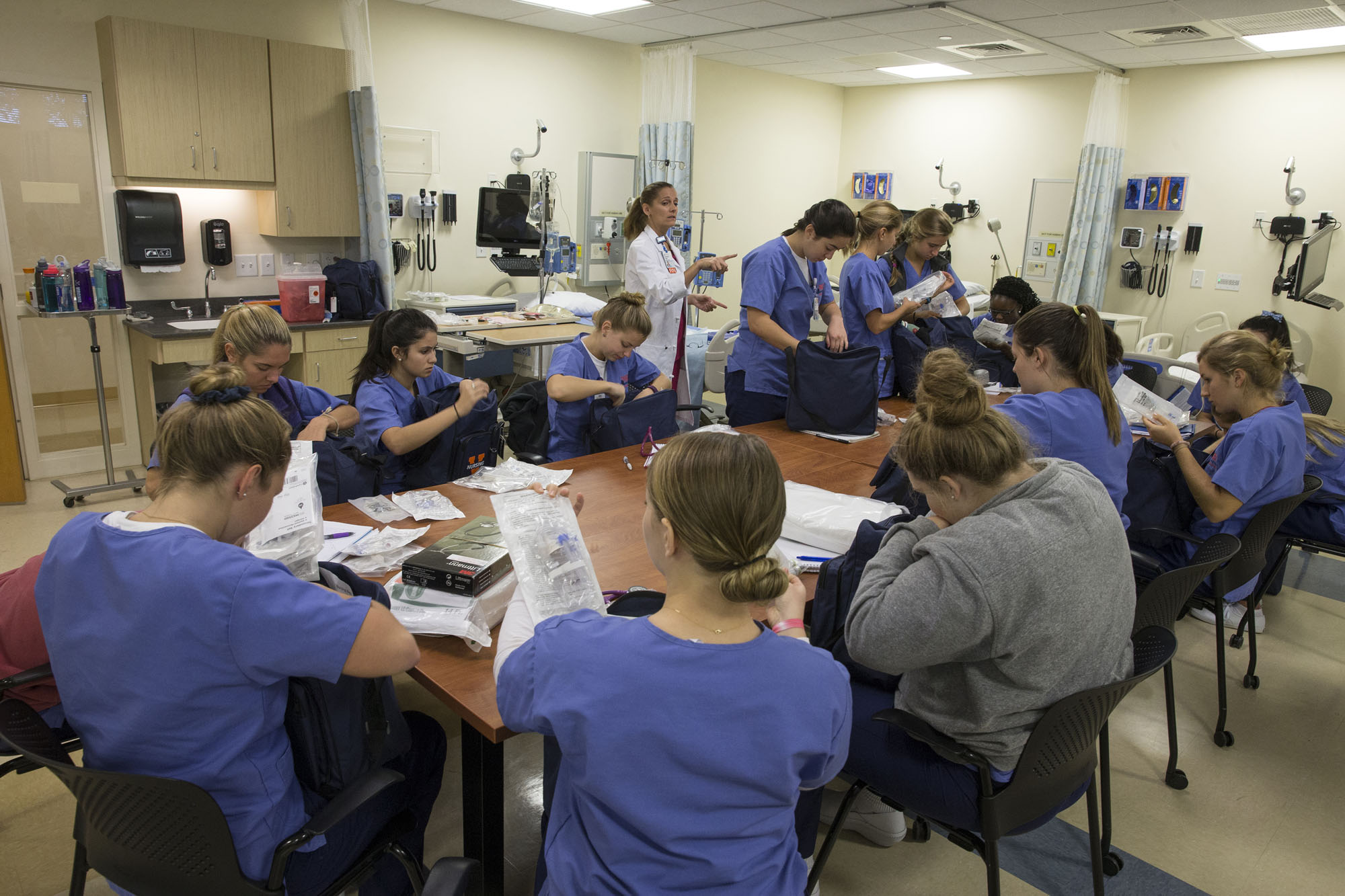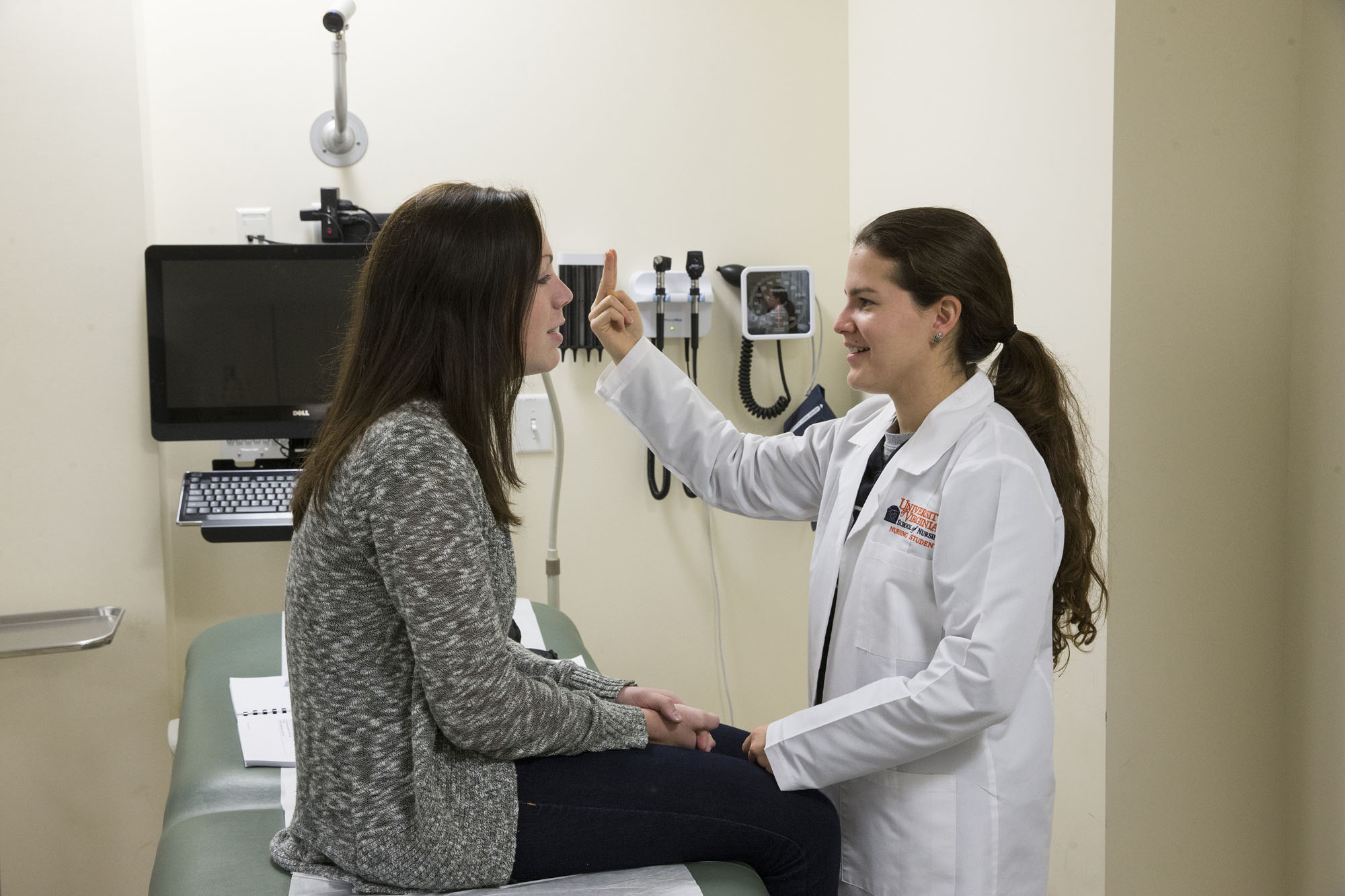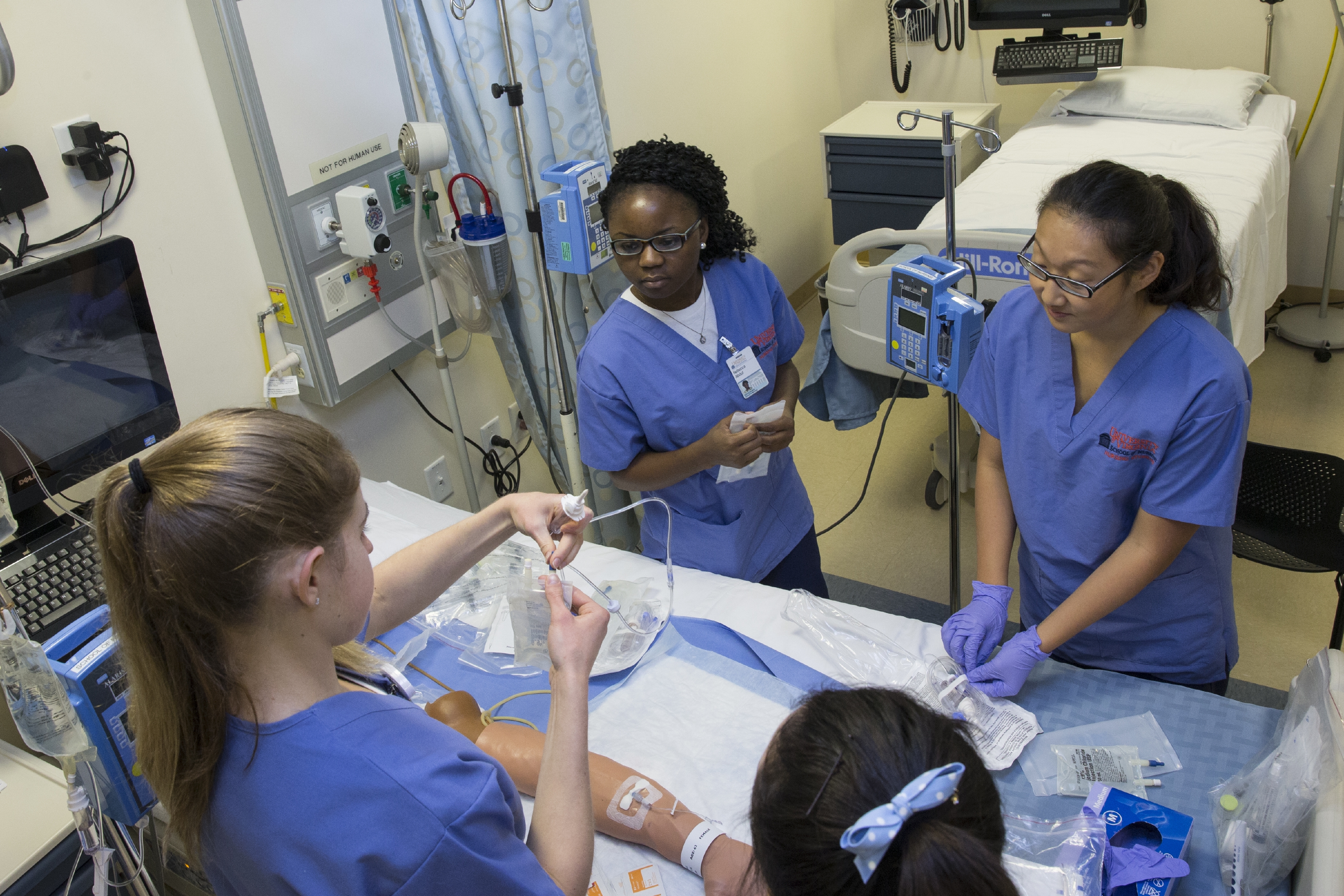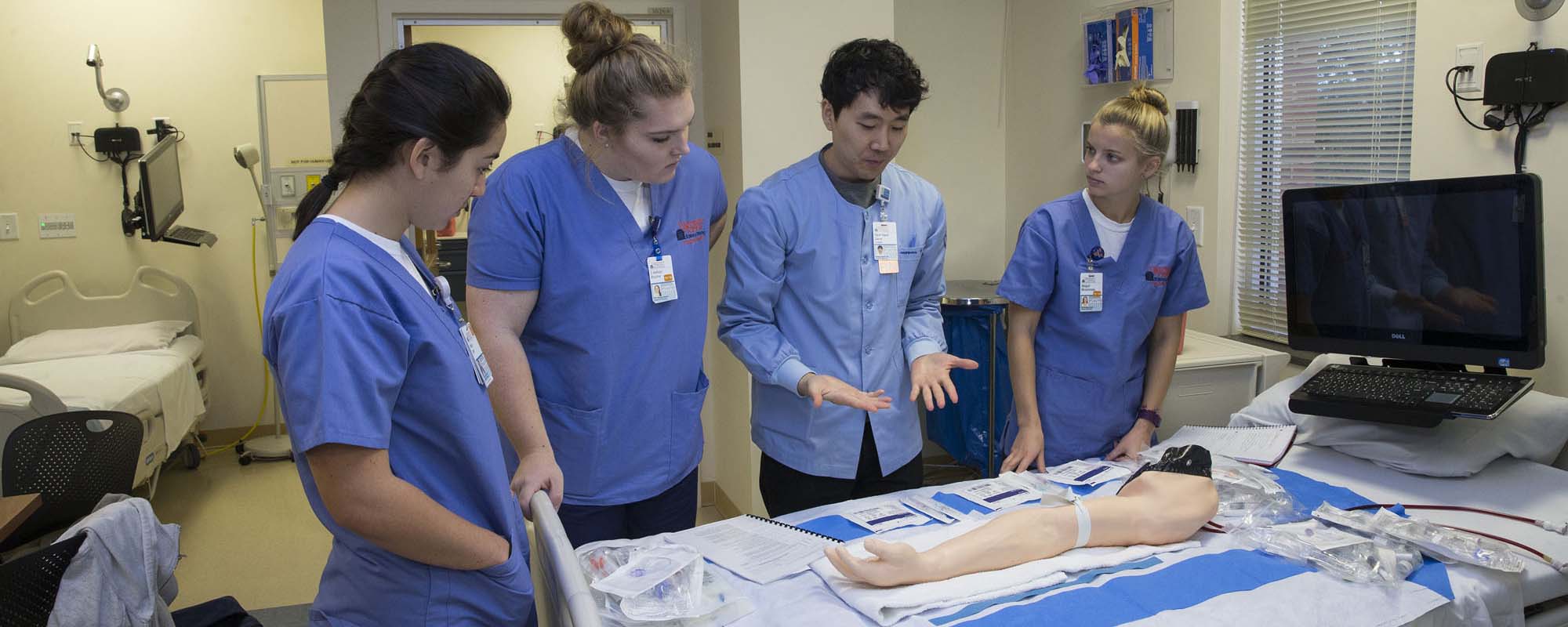Some clad in street clothes and others in navy scrubs, University of Virginia School of Nursing students peer into one another’s ears, noses and throats, palpate one another’s livers, and listen for irregular heartbeats. Graduate students gently nudge central lines into pulsating, life-like chests just under the collarbone, and practice placing sutures across lacerations on pigs’ feet. Undergraduates don and doff protective gear as they learn the highly controlled entrance and exit procedures of an isolation unit.
From down the hall come the cries of a fevered baby with bronchiolitis. In another room, a huge variety of simulated body parts are catheterized, their wounds dressed and IV drips placed. One room over, Noelle, an expectant mother, is giving birth. Again.
After more than a year of coursework, students begin putting their nascent nursing skills to the test in the 9,200-square-foot Mary Morton Parsons Clinical Simulation Learning Center. The facility offers a starting point where nursing students can practice what they’ve learned in the classroom in a controlled, hands-on environment well before moving on to their clinical rotations and living human patients.

Nursing students use the Sim Lab to gain practical experience with patients before they ever set foot in a hospital. Photos by Dan Addison / University Communications
“Given that we cannot instruct students for every eventuality and situation they’ll encounter,” Haugh said, “the simulation center gives students a chance to practice interventions, encourage creativity and facilitate their ability to critically think on their feet during high-fidelity simulations. And though neither the patients nor the situations are real, and there’s no risk, there’s no question that the experiences we offer are very realistic. And our students take them very seriously.”

Second-year nursing students practice examining one another’s ears, eyes, noses and throats in the Mary Morton Parsons Clinical Simulation Learning Center.

Third- and fourth-year students in Professor Kathleen Rea’s skills lab practice starting IV lines using real needles on simulated arms.
“No two days are ever alike in the Sim Lab,” Haugh added, “which makes working there a joy for all.”
Media Contact
Article Information
November 3, 2015
/content/where-practice-makes-perfect-inside-uva-nursings-sim-lab

